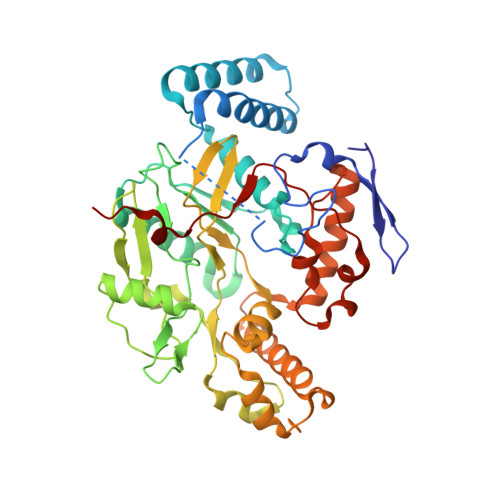Improvement of Cell Permeability of Human Neuronal Nitric Oxide Synthase Inhibitors Using Potent and Selective 2-Aminopyridine-Based Scaffolds with a Fluorobenzene Linker.
Do, H.T., Wang, H.Y., Li, H., Chreifi, G., Poulos, T.L., Silverman, R.B.(2017) J Med Chem 60: 9360-9375
- PubMed: 29091437
- DOI: https://doi.org/10.1021/acs.jmedchem.7b01356
- Primary Citation of Related Structures:
6AUQ, 6AUR, 6AUS, 6AUT, 6AUU, 6AUV, 6AUW, 6AUX, 6AUY, 6AUZ, 6AV0, 6AV1, 6AV2, 6AV3, 6AV4, 6AV5, 6AV6, 6AV7 - PubMed Abstract:
Inhibition of neuronal nitric oxide synthase (nNOS) is a promising therapeutic approach to treat neurodegenerative diseases. Recently, we have achieved considerable progress in improving the potency and isoform selectivity of human nNOS inhibitors bearing a 2-aminopyridine scaffold. However, these inhibitors still suffered from too low cell membrane permeability to enter into CNS drug development. We report herein our studies to improve permeability of nNOS inhibitors as measured by both PAMPA-BBB and Caco-2 assays. The most permeable compound (12) in this study still preserves excellent potency with human nNOS (K i = 30 nM) and very high selectivity over other NOS isoforms, especially human eNOS (hnNOS/heNOS = 2799, the highest hnNOS/heNOS ratio we have obtained to date). X-ray crystallographic analysis reveals that 12 adopts a similar binding mode in both rat and human nNOS, in which the 2-aminopyridine and the fluorobenzene linker form crucial hydrogen bonds with glutamate and tyrosine residues, respectively.
Organizational Affiliation:
Department of Chemistry, Department of Molecular Biosciences, Chemistry of Life Processes Institute, Center for Molecular Innovation and Drug Discovery, Center for Developmental Therapeutics, Northwestern University , 2145 Sheridan Road, Evanston, Illinois 60208-3113, United States.


















